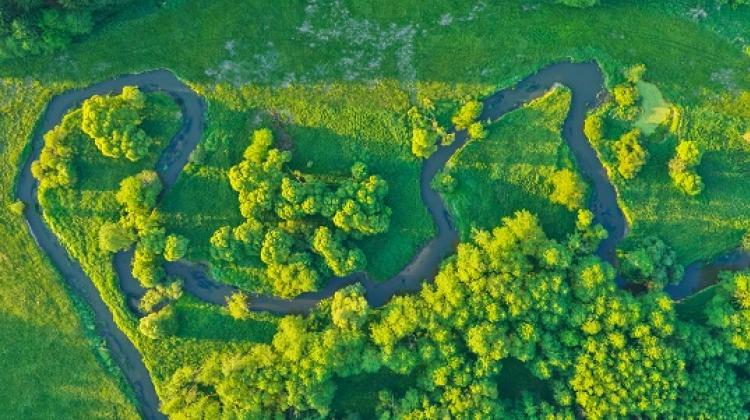Rewetting peatlands brings real economic benefits, says hydrologist
 Credit: Adobe Stock
Credit: Adobe Stock
The vast majority of wetlands in Poland and Europe have already been drained for various purposes. Meanwhile, draining peatlands and, for example, introducing forest in their place brings much lower economic benefits than rewetting them. A team of scientists with the participation of Polish researchers have shown that in Lithuania, rewetting drained forest peat bogs would bring profits of up to EUR 170 million per year.
Scientists from the Warsaw University of Life Sciences, Vytautas Magnus University in Kaunas and the Inland Norway University of Applied Sciences discuss this in their publication in the Journal of Environmental Management.
'The process of restoring swamps is relatively simple: the wetlands are supposed to be wet. It usually comes down to limiting the outflow of water from these areas. So if there is an unused or unnecessary drainage ditch in a peat bog, we plug it. The public should be made aware of how important this task is,’ Dr. Mateusz Grygoruk from the Warsaw University of Life Sciences told PAP.
'Some may think that restoring wetlands is for hobbyists, that we just want it to be green,’ he adds. He points out that in environmental management, the discussion on nature protection is increasingly focused on cost-benefit analysis. 'These are difficult to estimate when we talk about biodiversity,’ he says. ‘However, when we start to analyse other environmental functions, the calculations become simpler. In this discussion, we provide specific economic arguments for the protection and restoration of peatlands.
'We calculated the current, historical and achievable water retention in forest peat bogs and compared it with the cost of storing such water by humans, in artificial retention reservoirs. We calculated the profits from harvesting wood and storing carbon dioxide by the environment, in soil and plants. Although we know that it is difficult to restore the environment of dried peat bogs to its original state, we also know that restoring the water retention and carbon sequestration functions in rewetted peat bogs is relatively easy and effective.’
For example, using the available data from Lithuania, the researchers compared the annual costs and profits related to maintaining commercial forests on dry peat bogs, draining peat bogs and restoring them.
In the light of the economic analysis, the most profitable scenario - wherever possible - is leaving forests in swampy habitats without draining them. The annual profit from water and carbon retention from one hectare of such a forest is estimated at EUR 582. In this scenario, the annual profit from storing water on one hectare is EUR 334, the profit from absorbing carbon dioxide in soil and plants is a total of EUR 186, and the profit from timber is EUR 61.
Rewetting drained forest peatlands by slowing water runoff and limiting traditional forest management in these areas is also cost-effective, giving a total benefit of approximately EUR 120 per hectare per year. However, certain costs related to the restoration of peatlands are required (EUR 57 per hectare per year). This cost is offset by benefits related to water retention (EUR 312 per hectare per year), carbon dioxide retention in trees and soil (EUR 140) and profits from the sale of wood (EUR 64 per hectare per year). However, some environmental costs can no longer be offset. Carbon dioxide (CO2) is emitted from drained peat bogs into the atmosphere.
The worst-case scenario is maintaining dried swamp habitats in forests. The calculated balance of profits from wood and the costs of water and carbon retention loss is negative and amounts to approximately EUR 439 per hectare per year.
Knowing the area of forest habitats in peatlands in Lithuania, researchers estimate that in the optimal scenario of managing these ecosystems by restoring proper water conditions, we will generate annual profits of EUR 170 million.
'In many countries, there is a rhetoric of the need to plant new forests +for the climate+. This often includes plans to +prepare+ peatlands for this purpose. Thinking globally, in the light of the research we have conducted, we cannot allow the transformation of remaining, well-preserved peatlands and their drainage in order to introduce intensive forest management in these areas,’ Grygoruk says.
Drawing attention to another problem, he says: 'Many national programs to counteract drought and small retention programs are focused on the construction of small retention reservoirs. Significant funds are allocated for this purpose. However, retention reservoirs are problematic because, being a source of greenhouse gas emissions themselves, they require significant funds for their maintenance over time. A much better investment would be to move money from these programs to restore peatlands, because they retain water in the environment much more effectively and for much longer.’
He adds that it may be easier to show that a retention reservoir has been built than that the outflow of water from a peat bog has been stopped, but this does not mean that reservoirs increase retention more effectively than restored wetlands.
Dr. Grygoruk says that his team's calculations do not include many other services that wetlands provide. ‘Restoring wetlands is not only about carbon or water retention. It is also about water purification, restoring biodiversity, cooling the microclimate, restoring the environmental mosaic and improving the quality of life. However, these functions are much more difficult to valuate,’ he says.
PAP - Science in Poland, Ludwika Tomala
lt/ zan/ kap/
tr. RL
Przed dodaniem komentarza prosimy o zapoznanie z Regulaminem forum serwisu Nauka w Polsce.
















